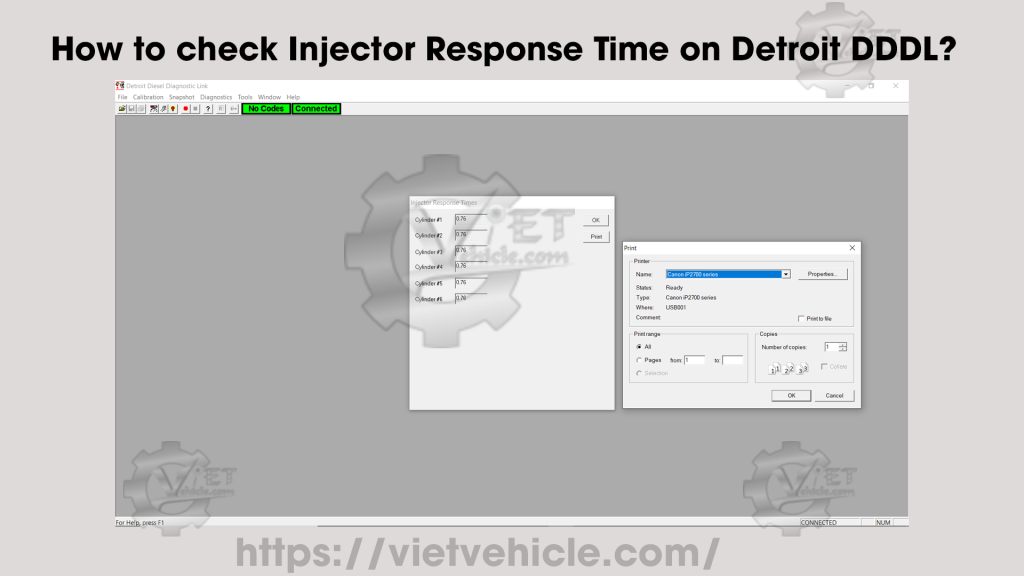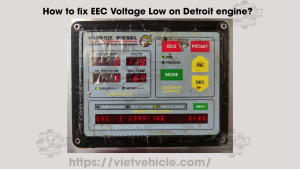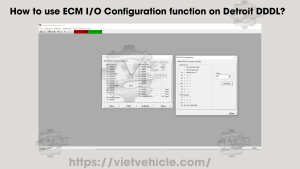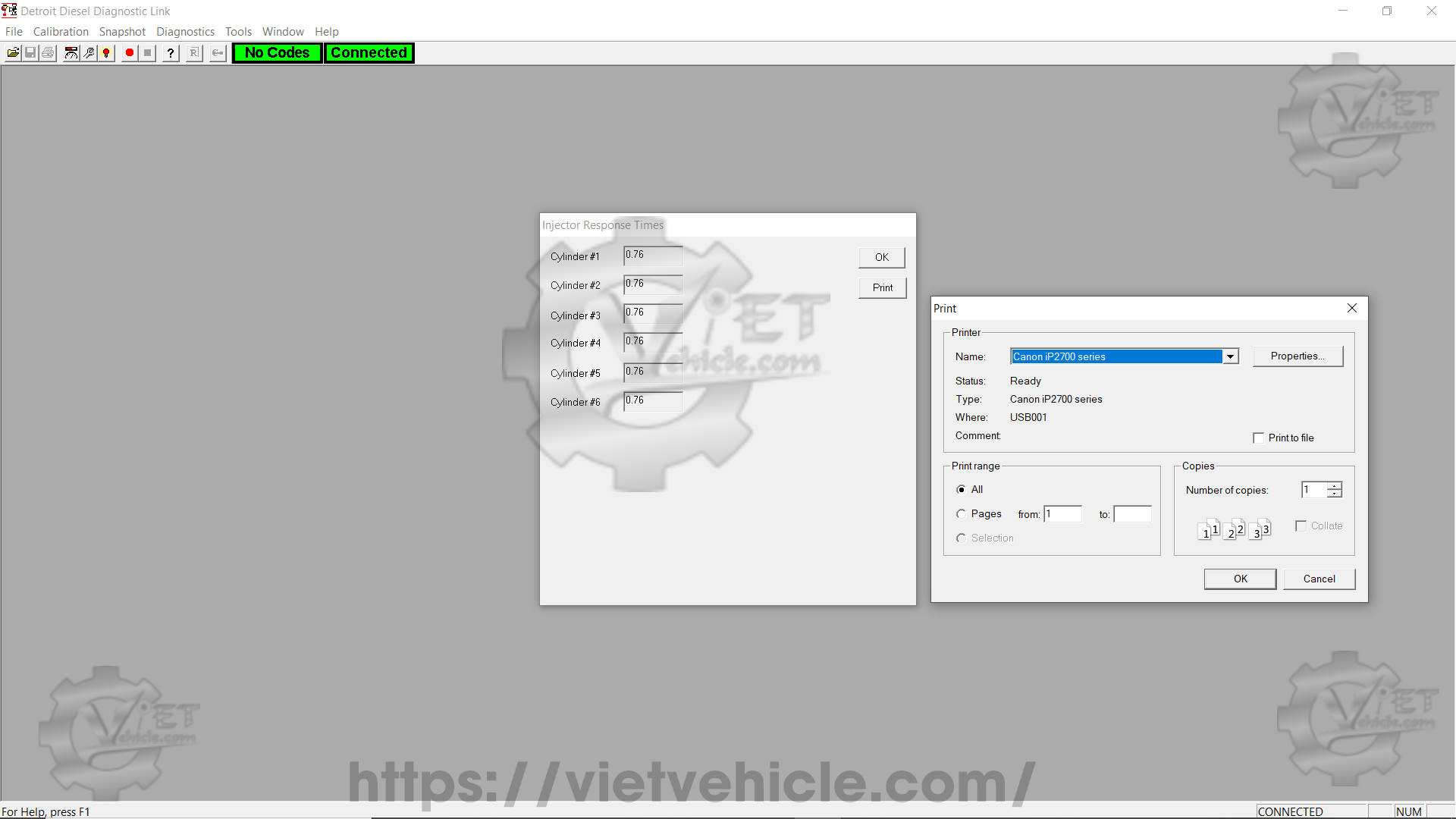
Figure 1.1 – Injector Response Times (Print)
The Electronic Unit Injector (EUI) utilizes a solenoid-operated valve to control injection timing and fuel metering. The Electronic Control Unit (ECU) manages this process, ensuring precise fuel injection timing.
Fuel injection begins when the solenoid valve closes. The valve closing point, referred to as the Injector Response Time, is sent back to the ECU. This feedback helps monitor and adjust injection timing dynamically. The pulse width stored in the calibration determines how long the solenoid valve remains closed.
- A larger pulse width results in a longer valve closure, allowing more fuel to be injected.
- A smaller pulse width reduces fuel injection.
Viewing Injector Response Times
To monitor injector response times, follow these steps:
1. Connect to DDDL Software (Detroit Diesel Diagnostic Link) for Series 60 engines.
2. Navigate to “Injector Response Times” from the Diagnostics menu.
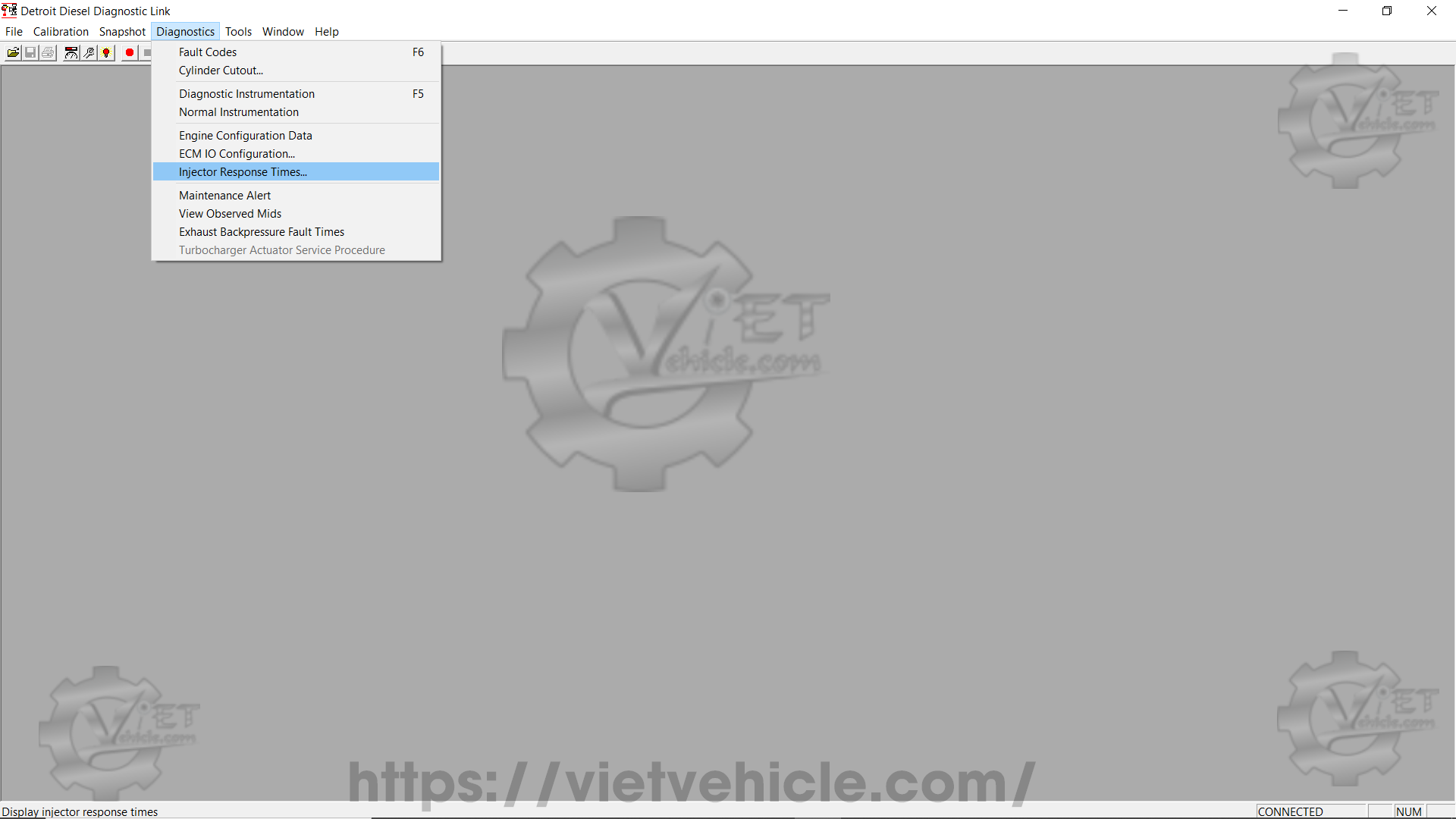
Figure 1.2 – Injector Response Times (Diagnostics)
3. The Injector Response Times dialog box will appear.
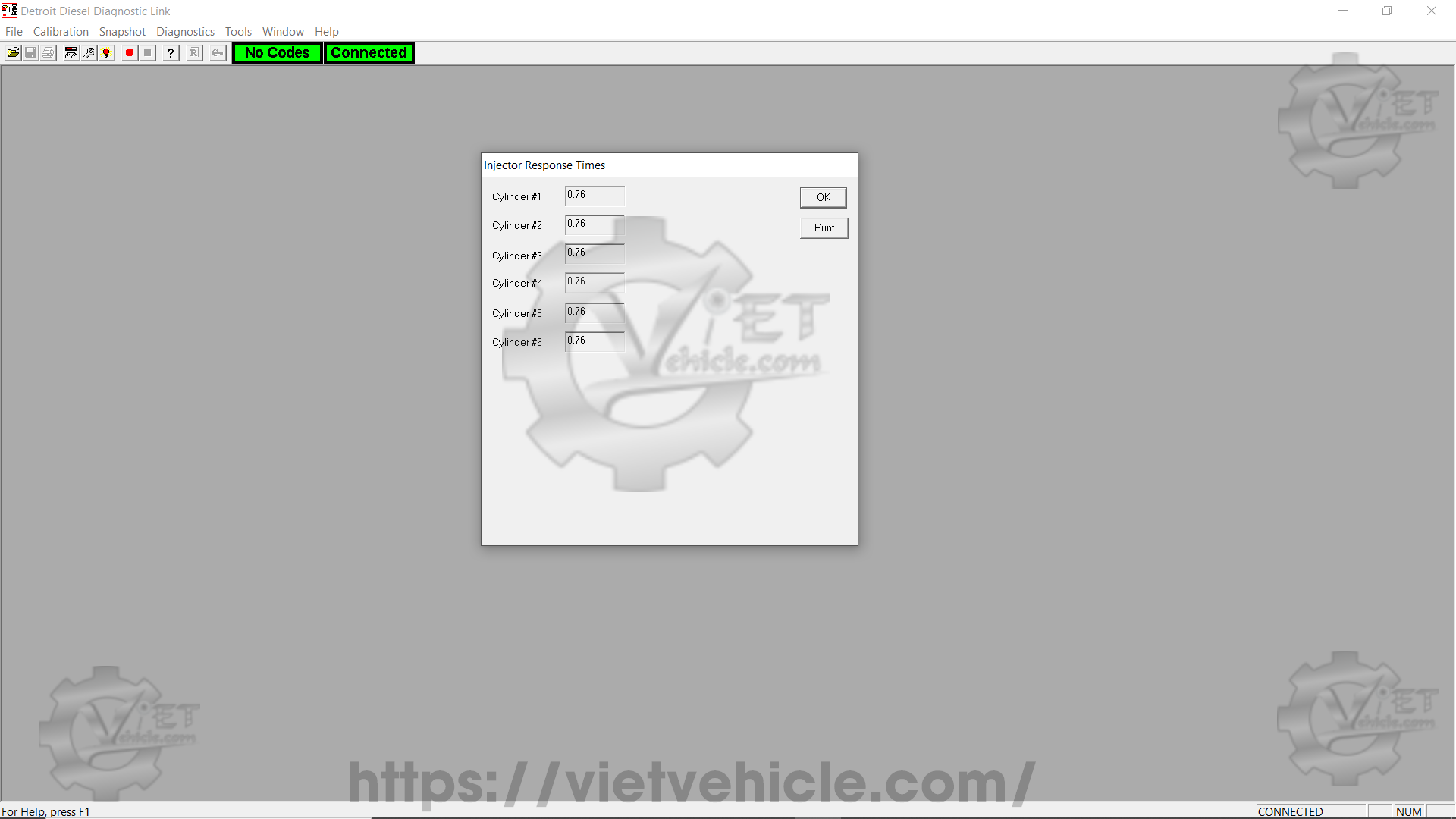
Figure 1.3 – Injector Response Times
Printing Injector Response Times
To print the data displayed in the Injector Response Times dialog box:
- Press the “Print” button. This will open the print dialog box, allowing you to configure printing options.
- The same print dialog box is also accessible via the File > Print menu.
(Refer to Figure 1.1 for an example of the printed Injector Response Times report.)
Injector Response Short (Flash Code 71)
This error occurs when the time between the ECU signal to close the injector solenoid valve and actual valve closure is shorter than expected.
Possible causes include:
- Aerated fuel system (air bubbles affecting fuel injection)
- High battery voltage (excessive electrical supply reducing solenoid activation time)
- Mechanical injector failure
- Defective solenoid
Injector Response Long (Flash Code 61)
This error occurs when the time between the ECU signal to close the injector solenoid valve and actual valve closure exceeds the expected range.
Engine oil temperature must be above 87°F (30°C) before diagnosing this issue.
Possible causes include:
- Faulty injector harness or connections (high resistance in wiring)
- Poor vehicle ground connections
- Sticky solenoid valve (delayed closure due to mechanical or electrical faults)
Effects of Battery Voltage on Injector Response Times
- Low battery voltage increases injector response times.
- High battery voltage decreases injector response times.
Injector response times may vary between injectors at a given engine speed (RPM). However, the response time for each individual injector should remain relatively consistent.
If an injector’s response time fluctuates significantly (typically ±0.2 ms) while the engine speed remains steady, this could indicate an electrical issue, such as:
- A faulty alternator or voltage regulator
- Damaged or broken ground cables
Maintaining proper electrical and fuel system health is essential for optimal injector performance and engine efficiency.
Contact Us
Whatsapp: +84.858.966.333
Facebook: VIETVehicle Remote Delete Service
YouTube: VIETVehicle – ECM Delete Tuning
Tiktok: VIETVehicle.com
Website: VIETVehicle.com

